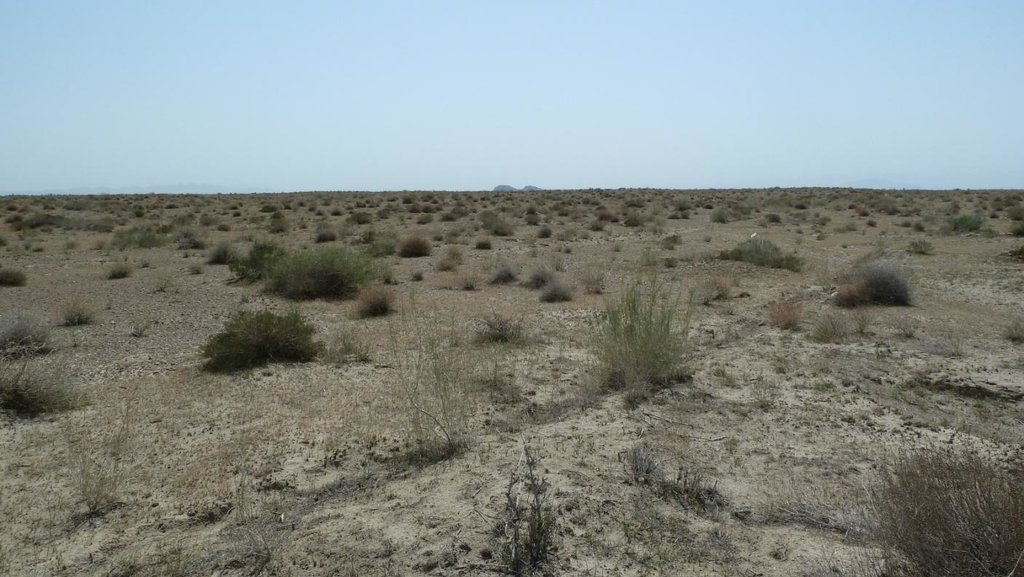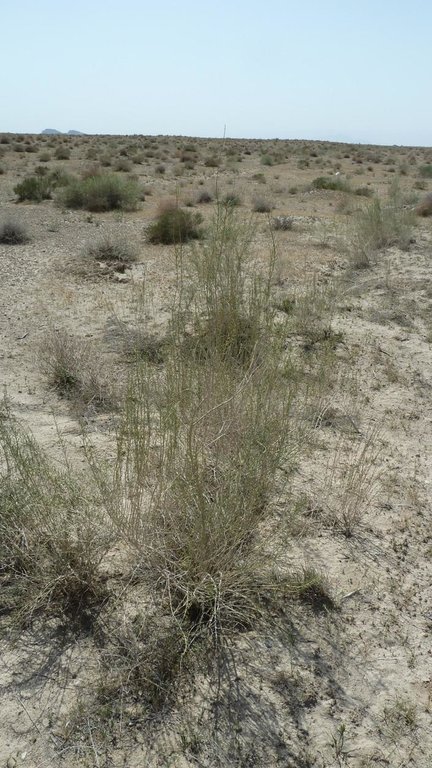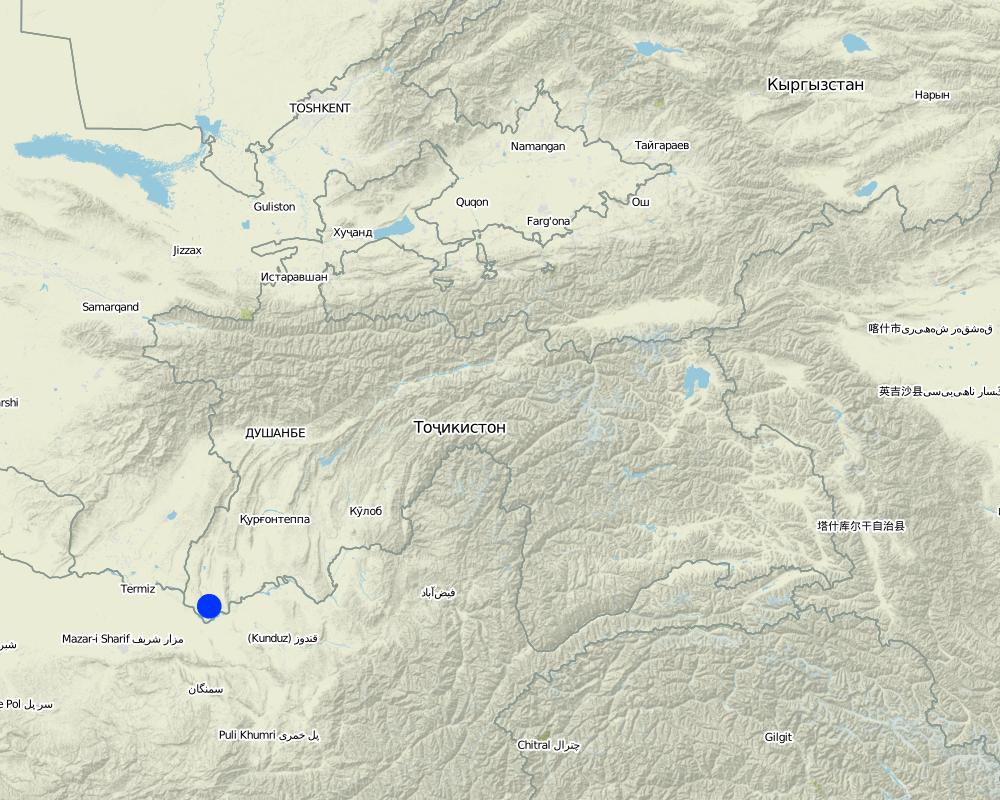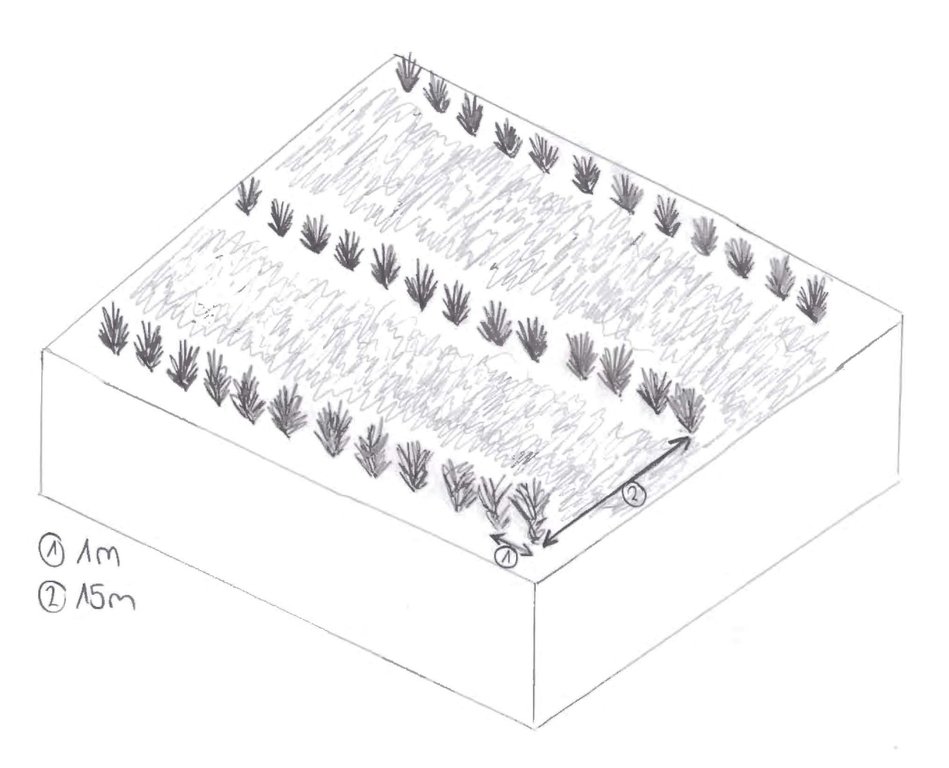Saxaul plantation for stabilisation of sandy soils [Tadjikistan]
- Création :
- Mise à jour :
- Compilateur : Firdavs Faizulloev
- Rédacteur : –
- Examinateurs : Alexandra Gavilano, David Streiff
technologies_1461 - Tadjikistan
Voir les sections
Développer tout Réduire tout1. Informations générales
1.2 Coordonnées des personnes-ressources et des institutions impliquées dans l'évaluation et la documentation de la Technologie
Spécialiste GDT:
Spécialiste GDT:
Spécialiste GDT:
Najmiddin Abdurakhimov
najmiddin.abdurakhimov@undp.org
UNDP
Tadjikistan
Nom du ou des institutions qui ont facilité la documentation/ l'évaluation de la Technologie (si pertinent)
CDE Centre for Development and Environment (CDE Centre for Development and Environment) - SuisseNom du ou des institutions qui ont facilité la documentation/ l'évaluation de la Technologie (si pertinent)
Central Asian Countries Initiative for Sustainable Land Management - Multicountry Capacity Building (CACILM - MCB) - KirghizistanNom du ou des institutions qui ont facilité la documentation/ l'évaluation de la Technologie (si pertinent)
United Nations Development Program (United Nations Development Program) - Tadjikistan1.3 Conditions relatives à l'utilisation par WOCAT des données documentées
Quand les données ont-elles été compilées (sur le terrain)?
13/04/2011
Le compilateur et la(les) personne(s) ressource(s) acceptent les conditions relatives à l'utilisation par WOCAT des données documentées:
Oui
2. Description de la Technologie de GDT
2.1 Courte description de la Technologie
Définition de la Technologie:
Saxaul (Haloxylon ammodendron) bushes are planted on denuded sandy soils with the aim to reduce the rate of desertification.
2.2 Description détaillée de la Technologie
Description:
On 15 ha of denuded land, prone to wind erosion the Saxaul bush (Haloxylon ammodendron) which is native to Central Asia was planted in order to stabilise the soils and halt desertification. Over two years 25 ha of Saxaul plantation was established through natural spreading of the plant. The idea came from UNDP who also funded the purchase of seeds, fuel and fertilisers. UNDP further conducted an awareness raising campaign among local land users and members of dekhkan farms about the role of Saxaul bushes in combating land degradation and techniques of planting Saxaul plantations.
Purpose of the Technology: The Shaartuz area has repeatedly suffered from droughts, and the natural vegetation cover is highly degraded due to overexploitation for firewood. This renders the sandy soils very susceptible to wind erosion. Saxaul plantations have been widely applied in other arid areas of Central Asia to combat desertification, and were selected as an appropriate method for soil fixation around Shaartuz.
Establishment / maintenance activities and inputs: Saxaul seeds have to be collected in November, and need to be planted immediately, as otherwise they lose their viability. A tractor was used to plough the land, and the seeds were planted manually. 15 ha of plantation were planted in one single day. As they are not irrigated in this area, the Saxaul bushes are entirely dependent on winter rain and dew for their water supply. The trees grow slowly and need protection from roaming cattle. As the forestry department (leskhoz) responsible for the protection of the plantation has no guards, the project employed a local forester from the Jamoat to protect the area. Meetings were held with surrounding villages to discuss the risk of wind erosion, and the need for the plantations. Also a mobile theatre was involved in order to raise the public awareness with regards to deforestation and desertification issues. An agreement was achieved with the local residents to help protect the newly planted trees from cattle.
Natural / human environment: Saxaul plantations improve vegetation cover, and therefore also increase water infiltration into the soil and improve soil structure. Once the soil has stabilised with the help of the Saxaul bushes, other herbs and bushes will regenerate in the area, and reinforce the vegetation cover. Moreover, different wild animals and birds are already nesting in the area as the vegetation increases.
2.3 Photos de la Technologie
2.5 Pays/ région/ lieux où la Technologie a été appliquée et qui sont couverts par cette évaluation
Pays:
Tadjikistan
Région/ Etat/ Province:
Shaartuz, Khatlon
Autres spécifications du lieu:
Jura Nazarov Jamoat
Map
×2.6 Date de mise en œuvre de la Technologie
Si l'année précise est inconnue, indiquez la date approximative: :
- il y a moins de 10 ans (récemment)
2.7 Introduction de la Technologie
Spécifiez comment la Technologie a été introduite: :
- par le biais de projets/ d'interventions extérieures
Commentaires (type de projet, etc.) :
2009
3. Classification de la Technologie de GDT
3.1 Principal(aux) objectif(s) de la Technologie
- réduire, prévenir, restaurer les terres dégradées
3.2 Type(s) actuel(s) d'utilisation des terres, là où la Technologie est appliquée

Pâturages
Pâturage extensif:
- Semi-nomadisme/ pastoralisme

Forêts/ bois
Produits et services:
- Conservation/ protection de la nature
Commentaires:
Major land use problems (compiler’s opinion): removal of natural vegetation cover, loss of topsoil through wind erosion
Major land use problems (land users’ perception): wind erosion, droughts,
Plantation forestry: Yes
Forest products and services: nature conservation / protection
Future (final) land use (after implementation of SLM Technology): Forests / woodlands: Fp: Plantations, afforestations
Si l'utilisation des terres a changé en raison de la mise en œuvre de la Technologie, indiquez l'utilisation des terres avant la mise en œuvre de la Technologie:
Grazing land: Ge: Extensive grazing land
3.3 Informations complémentaires sur l'utilisation des terres
Nombre de période de croissance par an: :
- 1
Précisez:
Longest growing period in days: 240Longest growing period from month to month: March-October
3.4 Groupe de GDT auquel appartient la Technologie
- brise-vent/ plantations abris
- Amélioration de la couverture végétale/ du sol
- amélioration des variétés végétales, des races animales
3.5 Diffusion de la Technologie
Commentaires:
Total area covered by the SLM Technology is 0.15 m2.
3.6 Mesures de GDT constituant la Technologie

pratiques végétales
- V1: Couverture d’arbres et d’arbustes
Commentaires:
Main measures: vegetative measures
Type of vegetative measures: aligned: -linear
3.7 Principaux types de dégradation des terres traités par la Technologie

érosion éolienne des sols
- Et: perte de la couche superficielle des sols (couche arable)
- Ed: déflation et déposition

dégradation biologique
- Bc: réduction de la couverture végétale
- Bh: perte d’habitats
- Bq: baisse de la quantité/ biomasse
Commentaires:
Main type of degradation addressed: Et: loss of topsoil, Ed: deflation and deposition, Bc: reduction of vegetation cover
Secondary types of degradation addressed: Bh: loss of habitats, Bq: quantity / biomass decline
Main causes of degradation: over-exploitation of vegetation for domestic use, overgrazing
Secondary causes of degradation: droughts, population pressure (high demand for firewood)
3.8 Prévention, réduction de la dégradation ou réhabilitation des terres dégradées
Spécifiez l'objectif de la Technologie au regard de la dégradation des terres:
- réduire la dégradation des terres
- restaurer/ réhabiliter des terres sévèrement dégradées
Commentaires:
Main goals: rehabilitation / reclamation of denuded land
Secondary goals: mitigation / reduction of land degradation
4. Spécifications techniques, activités, intrants et coûts de mise en œuvre
4.1 Dessin technique de la Technologie
4.2 Spécification/ explications techniques du dessin technique
Saxaul seeds are planted in parallel rows, with 15 m spacing between each row. The interval between seeds within each row is 1m.
Location: Jura Nazarov Jamoat. Shaartuz, Khatlon
Date: 27.05.2011
Technical knowledge required for field staff / advisors: low
Technical knowledge required for land users: low
Main technical functions: improvement of ground cover, stabilisation of soil (eg by tree roots against land slides)
Secondary technical functions: increase of infiltration, reduction in wind speed, increase of biomass (quantity)
Aligned: -linear
Vegetative material: T : trees / shrubs
Number of plants per (ha): 667
Spacing between rows / strips / blocks (m): 15
Vertical interval within rows / strips / blocks (m): 1
Trees/ shrubs species: Saxaul (Haloxylon ammodendron)
4.3 Informations générales sur le calcul des intrants et des coûts
autre/ monnaie nationale (précisez):
Somoni
Indiquer le taux de change du dollars en monnaie locale (si pertinent): 1 USD= :
4,5
Indiquez le coût salarial moyen de la main d'œuvre par jour:
5.50
4.4 Activités de mise en place/ d'établissement
| Activité | Type de mesures | Calendrier | |
|---|---|---|---|
| 1. | Collect Saxaul seeds | Végétale | November |
| 2. | Plant seeds using tractor with automated seed planter | Végétale | December |
| 3. | Application of carbamide fertiliser once after planting seeds | Végétale | December |
4.5 Coûts et intrants nécessaires à la mise en place
| Spécifiez les intrants | Unité | Quantité | Coûts par unité | Coût total par intrant | % du coût supporté par les exploitants des terres | |
|---|---|---|---|---|---|---|
| Main d'œuvre | Collect Saxaul seeds | Persons/day | 16,0 | 20,0 | 320,0 | 100,0 |
| Equipements | Tractor for seed planting | Persons/day | 1,0 | 100,0 | 100,0 | 100,0 |
| Equipements | Fuel | ha | 15,0 | 6,666666 | 100,0 | |
| Matériel végétal | Seeds | kg | 13,0 | 15,0 | 195,0 | |
| Engrais et biocides | Fertilizer | kg | 3,3 | 2,42424242 | 8,0 | |
| Coût total de mise en place de la Technologie | 723,0 | |||||
Si le coût n'est pas pris en charge à 100% par l'exploitant des terres, indiquez qui a financé le coût restant:
UNDP
4.6 Activités d'entretien/ récurrentes
| Activité | Type de mesures | Calendrier/ fréquence | |
|---|---|---|---|
| 1. | Protection of plantation from roaming cattle by local forestry employee | Végétale | ongoing |
4.7 Coûts et intrants nécessaires aux activités d'entretien/ récurrentes (par an)
| Spécifiez les intrants | Unité | Quantité | Coûts par unité | Coût total par intrant | % du coût supporté par les exploitants des terres | |
|---|---|---|---|---|---|---|
| Main d'œuvre | Protection of plantation from cattle | ha/month | 15,0 | 16,666667 | 250,0 | |
| Coût total d'entretien de la Technologie | 250,0 | |||||
Commentaires:
Machinery/ tools: tractor with automated seed planter
Costs for the purchase of seeds and fertilisers were calculated for one ha of plantation.
However, the costs indicated for machinery and labour regarding the seed collection and planting process are with respect to the whole plantation of 15 ha.
The costs for labour during maintenance are for the monthly salary of an employee who is needed to protect the plantation from outsiders.
4.8 Facteurs les plus importants affectant les coûts
Décrivez les facteurs les plus importants affectant les coûts :
For this technology, costs are related to the use of a tractor for planting of seeds and for the purchase of seeds and fertiliser. As the plantation was implemented by the forestry agency, labour used was provided by current employees of the agency.
5. Environnement naturel et humain
5.1 Climat
Précipitations annuelles
- < 250 mm
- 251-500 mm
- 501-750 mm
- 751-1000 mm
- 1001-1500 mm
- 1501-2000 mm
- 2001-3000 mm
- 3001-4000 mm
- > 4000 mm
Spécifiez la pluviométrie moyenne annuelle (si connue), en mm:
100,00
Zone agro-climatique
- aride
Thermal climate class: temperate
5.2 Topographie
Pentes moyennes:
- plat (0-2 %)
- faible (3-5%)
- modéré (6-10%)
- onduleux (11-15%)
- vallonné (16-30%)
- raide (31-60%)
- très raide (>60%)
Reliefs:
- plateaux/ plaines
- crêtes
- flancs/ pentes de montagne
- flancs/ pentes de colline
- piémonts/ glacis (bas de pente)
- fonds de vallée/bas-fonds
Zones altitudinales:
- 0-100 m
- 101-500 m
- 501-1000 m
- 1001-1500 m
- 1501-2000 m
- 2001-2500 m
- 2501-3000 m
- 3001-4000 m
- > 4000 m
5.3 Sols
Profondeur moyenne du sol:
- très superficiel (0-20 cm)
- superficiel (21-50 cm)
- modérément profond (51-80 cm)
- profond (81-120 cm)
- très profond (>120 cm)
Texture du sol (de la couche arable):
- grossier/ léger (sablonneux)
Matière organique de la couche arable:
- faible (<1%)
Si disponible, joignez une description complète du sol ou précisez les informations disponibles, par ex., type de sol, pH/ acidité du sol, capacité d'échange cationique, azote, salinité, etc.
Soil fertility is low
Soil drainage / infiltration is good
Soil water storage capacity is very low
5.4 Disponibilité et qualité de l'eau
Profondeur estimée de l’eau dans le sol:
> 50 m
Disponibilité de l’eau de surface:
faible/ absente
Qualité de l’eau (non traitée):
faiblement potable (traitement nécessaire)
Commentaires et précisions supplémentaires sur la qualité et la quantité d'eau:
Water quality (untreated) is poor and groundwater
5.5 Biodiversité
Diversité des espèces:
- faible
5.6 Caractéristiques des exploitants des terres appliquant la Technologie
Orientation du système de production:
- commercial/ de marché
Individus ou groupes:
- employé (entreprise, gouvernement)
Indiquez toute autre caractéristique pertinente des exploitants des terres:
Difference in the involvement of women and men: forestry agency
Annual population growth: 1% - 2%
Off-farm income specification: It is not the land users who apply the technology, but forestry agency employees.
Market orientation of production system: only protection function
5.8 Propriété foncière, droits d’utilisation des terres et de l'eau
Propriété foncière:
- état
Droits d’utilisation des terres:
- communautaire (organisé)
5.9 Accès aux services et aux infrastructures
santé:
- pauvre
- modéré
- bonne
éducation:
- pauvre
- modéré
- bonne
assistance technique:
- pauvre
- modéré
- bonne
emploi (par ex. hors exploitation):
- pauvre
- modéré
- bonne
marchés:
- pauvre
- modéré
- bonne
énergie:
- pauvre
- modéré
- bonne
routes et transports:
- pauvre
- modéré
- bonne
eau potable et assainissement:
- pauvre
- modéré
- bonne
services financiers:
- pauvre
- modéré
- bonne
6. Impacts et conclusions
6.1 Impacts sur site que la Technologie a montrés
Impacts socio-économiques
Production
surface de production
Commentaires/ spécifiez:
Loss of grazing land due to restricted access, however, land was already degraded.
Revenus et coûts
dépenses pour les intrants agricoles
Commentaires/ spécifiez:
Fertilisers are needed during the establishment phase
charge de travail
Commentaires/ spécifiez:
A guard is needed to protect the plantation all day long from roaming cattle.
Impacts écologiques
Cycle de l'eau/ ruissellement
évaporation
Sols
couverture du sol
perte en sol
Biodiversité: végétale, animale
biomasse/ au dessus du sol C
diversité des habitats
Commentaires/ spécifiez:
provides a habitat for a bird species that are dependent on the tree (Passer ammodendri)
Réduction des risques de catastrophe et des risques climatiques
vitesse du vent
6.2 Impacts hors site que la Technologie a montrés
sédiments (indésirables) transportés par le vent
6.3 Exposition et sensibilité de la Technologie aux changements progressifs et aux évènements extrêmes/catastrophes liés au climat (telles que perçues par les exploitants des terres)
Changements climatiques progressifs
Changements climatiques progressifs
| Saison | Type de changements/ extrêmes climatiques | Comment la Technologie fait-elle face à cela? | |
|---|---|---|---|
| températures annuelles | augmente | bien |
Extrêmes climatiques (catastrophes)
Catastrophes météorologiques
| Comment la Technologie fait-elle face à cela? | |
|---|---|
| pluie torrentielle locale | bien |
| tempête de vent locale | bien |
Catastrophes climatiques
| Comment la Technologie fait-elle face à cela? | |
|---|---|
| sécheresse | bien |
Catastrophes hydrologiques
| Comment la Technologie fait-elle face à cela? | |
|---|---|
| inondation générale (rivière) | pas bien |
Autres conséquences liées au climat
Autres conséquences liées au climat
| Comment la Technologie fait-elle face à cela? | |
|---|---|
| réduction de la période de croissance | bien |
6.4 Analyse coûts-bénéfices
Quels sont les bénéfices comparativement aux coûts de mise en place (du point de vue des exploitants des terres)?
Rentabilité à court terme:
neutre / équilibrée
Rentabilité à long terme:
positive
Quels sont les bénéfices comparativement aux coûts d'entretien récurrents (du point de vue des exploitants des terres)?
Rentabilité à court terme:
neutre / équilibrée
Rentabilité à long terme:
positive
6.5 Adoption de la Technologie
Si disponible, quantifiez (nombre de ménages et/ou superficie couverte):
NA
Parmi tous ceux qui ont adopté la Technologie, combien d'entre eux l'ont fait spontanément, à savoir sans recevoir aucune incitation matérielle ou aucun paiement?
- 0-10%
Commentaires:
Comments on acceptance with external material support: the technology was implemented by the forestry agency, not the land users
There is a little trend towards spontaneous adoption of the Technology
Comments on adoption trend: Farmers have understood the importance of Saxaul plantations, and the role Saxaul bushes can play in combating sand drifts. There has been a trend towards growing spontaneous adoption of the technology by others.
6.7 Points forts/ avantages/ possibilités de la Technologie
| Points forts/ avantages/ possibilités du point de vue du compilateur ou d'une autre personne ressource clé |
|---|
|
Effective fixation of sandy soils, protecting them from wind storms and preventing erosion. How can they be sustained / enhanced? Increase plantation areas in the region |
| Use of native tree species which are very well adapted to arid ecosystems |
| Through the plantation of Saxaul, the establishment of other plant species follows on naturally. |
6.8 Faiblesses/ inconvénients/ risques de la Technologie et moyens de les surmonter
| Faiblesses/ inconvénients/ risques du point de vue de l’exploitant des terres | Comment peuvent-ils être surmontés? |
|---|---|
| Decline of areas suitable for cattle grazing | Developing a management plan which could include restricted user rights for cattle grazing |
| Faiblesses/ inconvénients/ risques du point de vue du compilateur ou d'une autre personne ressource clé | Comment peuvent-ils être surmontés? |
|---|---|
| The plantation only has protective function, but there is no aim to introduce a sustainable management scheme which would allow for the extraction of firewood. | Develop a management plan |
| The area covered by the plantation is very small so the impacts might be minimal. | Increase the plantation area |
Liens et modules
Développer tout Réduire toutLiens
Aucun lien
Modules
Aucun module trouvé






